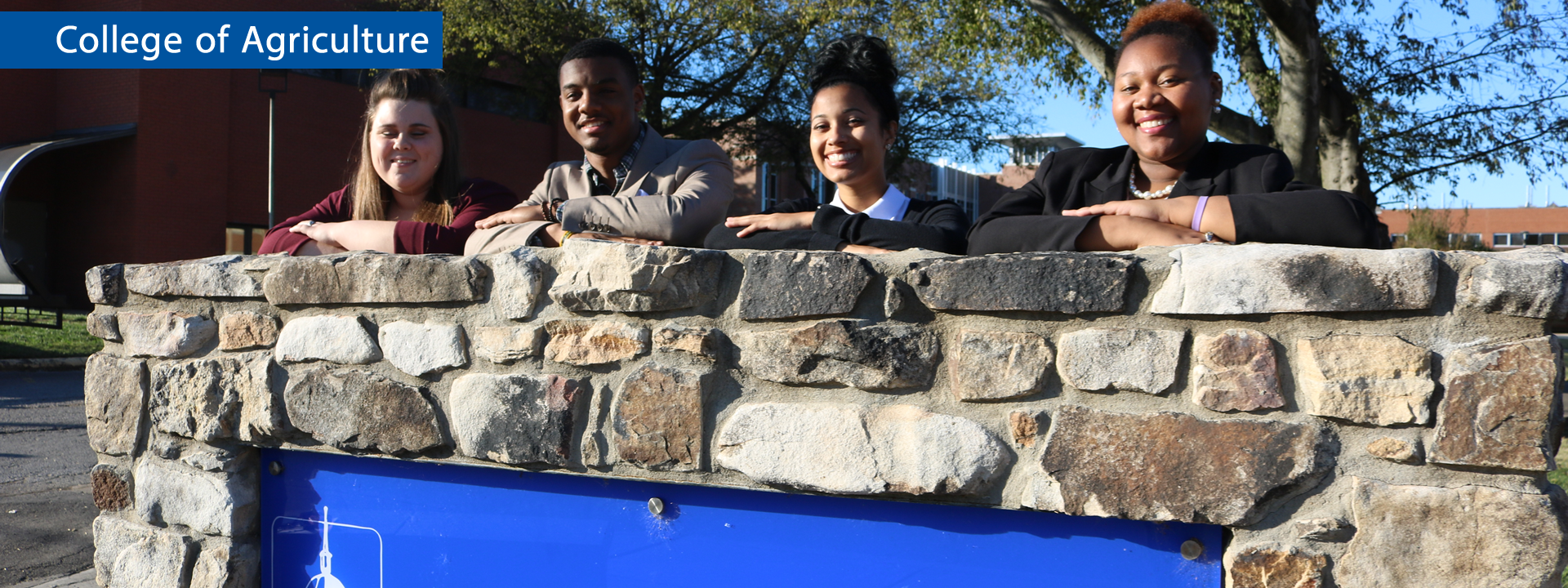- Home >
- College of Agriculture
- > Secure America's energy future through renewable biofuels
Secure America's Energy Future through Renewable Biofuels
Research to Create Sustainable Energy through Agriculture
Improving Switchgrass Lignocellulosic Biomass for Biofuels through the Interaction of Cell Wall Biosynthetic Genes and Abscisic Acid Signaling
Using Cell-specific Omics Approaches to study Tomato Root Development Against Metal Toxicity in Acidic Soil
Improving Switchgrass Lignocellulosic Biomass for Biofuels through the Interaction of Cell Wall Biosynthetic Genes and Abscisic Acid Signaling
Dr. Christine Ondzighi Assoume
The project describes herein proposes to study the biotechnology and genomics of switchgrass (Panicum virgatum L.), primarily to improve its biomass for biofuel and bioproducts production. In the United States, switchgrass (Panicum virgatum L.), a North American prairie grassland species, is one of the potential lignocellulosic biofuel feedstock. This is partly due to its local adoption and high biomass accumulation. The limitation of using switchgrass for biofuels is the difficulty to degrade the major constituents of plant cell wall biomass, which in some instances is due to its recalcitrance behavior. Production and genetic manipulation of switchgrass are advantageous and needed, to develop and improve switchgrass biomass for biofuel production. Therefore, the overarching goal of the project is to reduce switchgrass recalcitrance to deconstruction/digestibility in order to improve biomass traits/properties for biofuels. To achieve this goal, the proposed project will focus on three primary objectives: (1) Development and establishment of efficient in-vitro cell suspension culture systems capable of genetic transformation and regeneration in switchgrass, (2) Development of reliable transformation and regeneration methods: cloning of biosynthetic lignin cell wall genes with CRISPR-Cas9 technology in switchgrass, and (3) Elucidation of Lignin Functions in Switchgrass Biomass Recalcitrance: Editing Lignin Genes, Biochemical and Morphometric Characterization of CRISPR-Cas9 Knock-down/out Lines. Overall, the project will enable us to fill the important gap in our understanding of the modifications of lignin that will modify cell wall biomass recalcitrance of switchgrass.
-back to top-
Using Cell-specific Omics Approaches to study Tomato Root Development Against Metal Toxicity in Acidic Soil
Dr. Suping Zhou
Soil acidification and associated Al toxicity are environmental factors threatening agriculture and food security worldwide (FAO et al., 2017; Hicks and Kuylenstierna et al., 2009; Kopittke et al., 2015 ). Over-application of nitrogen (N) and sulphur (S) fertilizers over time has led to decline in soil pH. In these soils, most agricultural and horticultural plants suffer damages from excess amounts of toxic Al ions (Al 3+), and often develop small root systems with stunted main and lateral roots. Roots are the primary tissues to be exposed to and experience this type of phytotoxicty; they also provide the first line of defense mechanisms to reduce the up-take and internalization of these ions as well as transport into above ground tissues. Root structure is composed of distinct layers of cells in both transverse and vertical directions. Cell functions are correlated with the genes expressed and proteins synthesized in the respective cells. Laser-capture microdissection (LCM) is a technique used to harvest pure cell populations from tissue sections containing a complex ensemble of cells.This project will develop the relevant technology for the isolation of these individual types of cells. It aims to develop a workflow to be used for the identification of proteomes/transcriptomes in each individual cell types in tomato plants and develop the first database of proteome expression within these cells. Such information will guide us to precisely select target genes that can be edited or engineered for improving plant performance under suboptimal conditions. The technology developed through this project can be applied to a broad range of plants and other organisms.
-back to top-
webpage contact:
SACS


